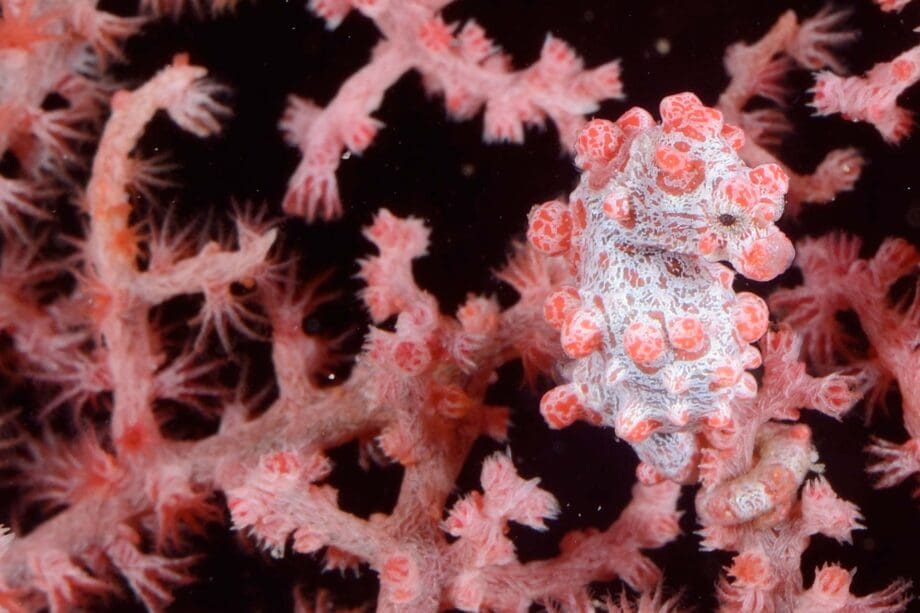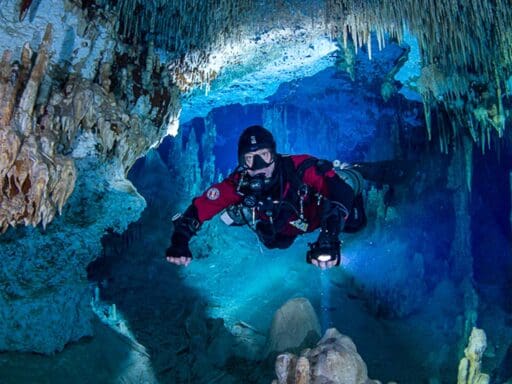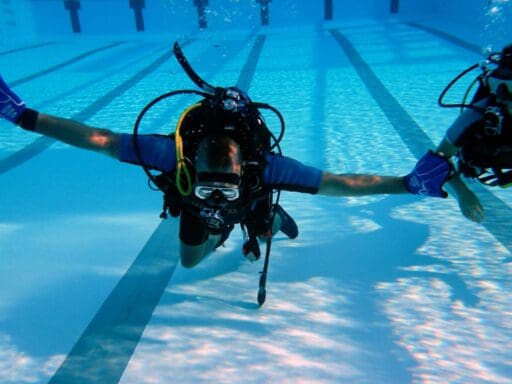From the whimsical sway of their prehensile tails to the intricate dance of courtship, these fascinating beings weave tales of underwater wonder. In this article, we’ll explore ten fun and fascinating facts about seahorses enchanting creatures, shedding light on their extraordinary features and the delicate dance they perform in the depths of our oceans.
1. Seahorses have an unusual body structure
Seahorses boast a mesmerizing body adorned with bony plates, a departure from the typical fish scales. This unconventional exoskeleton provides both structure and protection, creating a distinctive silhouette in the underwater world.
Complementing this feature is their horse-like head and tubular snout, embodying an intricate skeletal framework that not only defines their appearance but also serves as an effective defense mechanism against potential predators.
2. Mating rituals
The courtship rituals of seahorses are nothing short of mesmerizing. Through an elaborate dance, seahorses engage in a spectacular display of vibrant colors and intricate movements.
This underwater ballet is a crucial aspect of attracting a mate, setting the stage for a unique reproductive journey.
Once paired, the female deposits her eggs into a specialized pouch on the male’s abdomen, initiating a remarkable process of male pregnancy, an extraordinary feature that distinguishes seahorses in the realm of marine life.
3. Male pregnancy
Seahorses redefine traditional gender roles with their unparalleled reproductive strategy. The male seahorse assumes the role of a devoted parent, carrying the developing eggs within a pouch on its abdomen.
This exceptional manifestation of paternal care ensures a secure environment for the embryos to mature, underlining the lengths to which seahorses go to safeguard the survival of their offspring.
Male pregnancy is a testament to the remarkable adaptability and evolutionary innovations within the seahorse species.
4. Camouflaging abilities
The camouflage prowess of seahorses is a marvel in itself. Through a remarkable ability to change color, they seamlessly blend into their surroundings, utilizing this adaptation as both a defense mechanism and a hunting strategy.
Their adeptness at mimicking the hues of coral reefs and seagrass beds allows seahorses to evade predators and ambush prey, showcasing an ingenious survival tactic that underscores their mastery in navigating diverse underwater habitats.
5. Slow swimmers
Despite their seemingly delicate appearance, seahorses are not agile swimmers. Relying on their dorsal fin, they flutter rapidly to navigate their environment.
Their limited mobility is compensated by the prehensile tails that anchor them to vegetation, a strategic approach to conserving energy in their underwater realm.
The unique swimming style of seahorses highlights their ability to adapt to the challenges of their habitat, emphasizing resilience over rapid motion.
6. Unique eyesight
Seahorses exhibit a remarkable visual adaptation with independently moving eyes, reminiscent of chameleons. This feature enables them to scan their surroundings without moving their bodies, a crucial skill in spotting tiny prey and evading potential threats.
Their keen eyesight is a testament to the specialized sensory mechanisms developed over generations, showcasing the precision and efficiency with which seahorses navigate their underwater domain.
7. Monogamous bonds
Seahorses are known for forming enduring monogamous pairs, with some species believed to mate for life. The intricate courtship rituals strengthen the bond between male and female seahorses, contributing to the stability of their families.
This commitment to monogamy highlights the social dynamics within seahorse partnerships, revealing a depth of connection and cooperation rarely observed in the marine world.
8. Seahorses come in many different sizes
The size diversity among seahorse species is striking, ranging from less than an inch to over a foot in length. The pygmy seahorse, for instance, is exceptionally tiny and well-camouflaged, posing a challenge to observers amid the intricate tapestry of coral reefs.
The variation in sizes across seahorse species underscores their adaptability to different marine environments, showcasing the evolutionary flexibility within the seahorse family.
9. Conservation concerns
Seahorses face a myriad of threats, including habitat destruction, overfishing, and exploitation for traditional medicine. Some species are listed as vulnerable or endangered, underscoring the urgent need for conservation efforts.
Understanding and addressing these challenges are crucial to ensuring the continued existence of these charismatic marine creatures, advocating for the preservation of their habitats and sustainable practices to safeguard seahorse populations.
10. Seahorses have just as curious cousins
Seahorses belong to the family Syngnathidae, a diverse group that includes pipefish and sea dragons. Exploring the broader family dynamics unveils fascinating characteristics shared among these relatives, such as the male pregnancy phenomenon and unusual body structures.
This inter-connectivity provides a holistic understanding of the intricate underwater world inhabited by seahorses, offering insights into the broader evolutionary tapestry of these captivating marine species.
Seahorses are undeniably captivating creatures with a set of features and behaviors that make them stand out in the vast underwater world.
From their mesmerizing courtship rituals to the peculiarities of male pregnancy, seahorses continue to intrigue and inspire a sense of wonder among those who explore the mysteries of the ocean.
As we learn more about these fascinating creatures, it becomes increasingly important to champion conservation efforts to ensure the continued existence of seahorses in our oceans.





